“The Gypsies’ Camp”
The only epic in the Romanian language “Tiganiada or “The Gypsies Camp published in a final version by Jacques Byck between 1800 and 1812 reflects the enlightenment ideas of the Transylvanian School.

Monica Chiorpec, 05.10.2015, 13:48
The only epic in the Romanian language “Tiganiada or “The Gypsies Camp published in a final version by Jacques Byck between 1800 and 1812 reflects the enlightenment ideas of the Transylvanian School whose representative is Ion Budai Deleanu, the author of this epic.
Despite the appearance of joviality, “The Gypsies Camp is one of the most important debates about the political situation of the Romanian medieval space seen from the perspective of the Enlightenment. Literary critic Paul Cernat will next talk about the emergence and significance of Ion Budai Deleanus “The Gypsies Camp.
“The Gypsies Camp is more than a simple ‘game, as the author himself called it. It is a writing with marked political connotations. The epic includes an entire debate about the best Gypsy social structure, which also alludes to other social structures. It is an almost encoded text and a discussion on it from the perspective of the Enlightenment and even of the French Revolution, which Ion Budai-Deleanu masterfully renders in the form of a poem, would be more than interesting and instructive. The poem is one of the most important pieces of writing of the Transylvanian School and Id say that, at a literary level, it is by far one of the most significant. But there is more than literature in this poem. It is an extremely complex, very sophisticated ideological writing and it is incredible how, at a time when ‘the Romanian language was not very developed, someone could write such an epic that subtly and sophisticatedly debated the most advanced ideas of the time, the Enlightenment ideas which Ion Budai Deleanu knew very well. There are also esoteric and freemasonic elements in the poem, which is a genuine manifesto of the Transylvanian School, in a way. Unfortunately this manifesto did not have the echo it deserved. As you may know, ‘The Gypsies Camp was perceived well in a certain cultural age.
The meditation on the power relations in the 15th century Romanian space to which Ion Budai Deleanu‘s epic invites us, also includes anti-feudal nuances. 4 centuries later, the Transylvanian School highlighted the ideas propagated by the French Revolution, against the feudal, aristocratic and religious privileges. The epic was properly perceived starting with the second half of the 19th century, during the Junimea literary society. Here is Paul Cernat with further details:
“The social dimension is less visible, but the ideological one is very present. And so is the linguistic one, I dare say. In order to reach the social dimension you must first get past some allegoric layers. This heroic-comical epic takes us back to the time of Vlad the Impaler. Moreover, beyond this layer, beyond the utopia and the reference to Rabelais, there is a mental format derived from the society specific to the end of the 18th century and the beginning of the 19th century. Ion Budai Deleanu was definitely a man of his time, which intended his writing to have an immediate political impact. It did not have the expected impact after all, but thats a different story. Still, it offers a pretty accurate image of the society of that time.
The title of the work itself makes readers think about ancient epics. In the early 19th century, the author of The Gipsies Camp chose a comic note with cultural references to the ancient times, for linguistic reasons.
“The very first songs make reference to the comic mini-epic ‘Batrachomyomachia or ‘The Frog-Mouse War by Homer, ‘Omer and ‘Omir, as he is very often referred to in the ‘Gypsies Camp. This option is possible in a comic mini-epic, due to language insufficiencies, to paraphrase writer Budai-Deleanu. The Romanian language, which was spoken at the time, was not ready, was not capable of absorbing the needed linguistic terms of a tragedy, of a dramatic epic written in a high register. So, the only version left was to write a popular, comic epic. It is well known that the epic has two possible registers: dramatic and comic. Budai-Deleanu has chosen the second version, not for the register of ‘The Iliad and ‘The Odyssey, but for the register used by Homer in the ‘Batrachomyomachia. However, apart from the comic style, he approached a series of very dramatic themes as well as a whole ideological debate on what form of government would be better. Beyond any doubt, it is a meditation on the way in which power corrupts and destroys a society, as happened in the case of the 15th century gypsy society. Actually, the option for the “Gypsies Camp also has its deeper, esoteric layers of meaning, stemming form ancient Egypt. We know gypsies were also called Egyptian, so all sorts of references are being made, to the pyramids, to the philosophy of the famous alchemist of Alexandria, Hermes Trismegistos, who stood on an equal footing with the Egyptian God Thot. This tends to be rather intricate, and since the notion of gypsies “covers the others as well, just as Budai Deleanu said, gypsies are actually the Romanians. Its a metaphor, an attempt of placing a larger category into abyss.
Ion Budai Deleanus “Gypsies Camp is “a way of speaking, using an allegorical clue, about things that used to be of crucial importance for the 19th century Romanian society. The subtleties that one of the most prominent representatives of the Transylvanian School makes use of in his work are actually elements that make up a masterpiece with significant ideological implications.






























